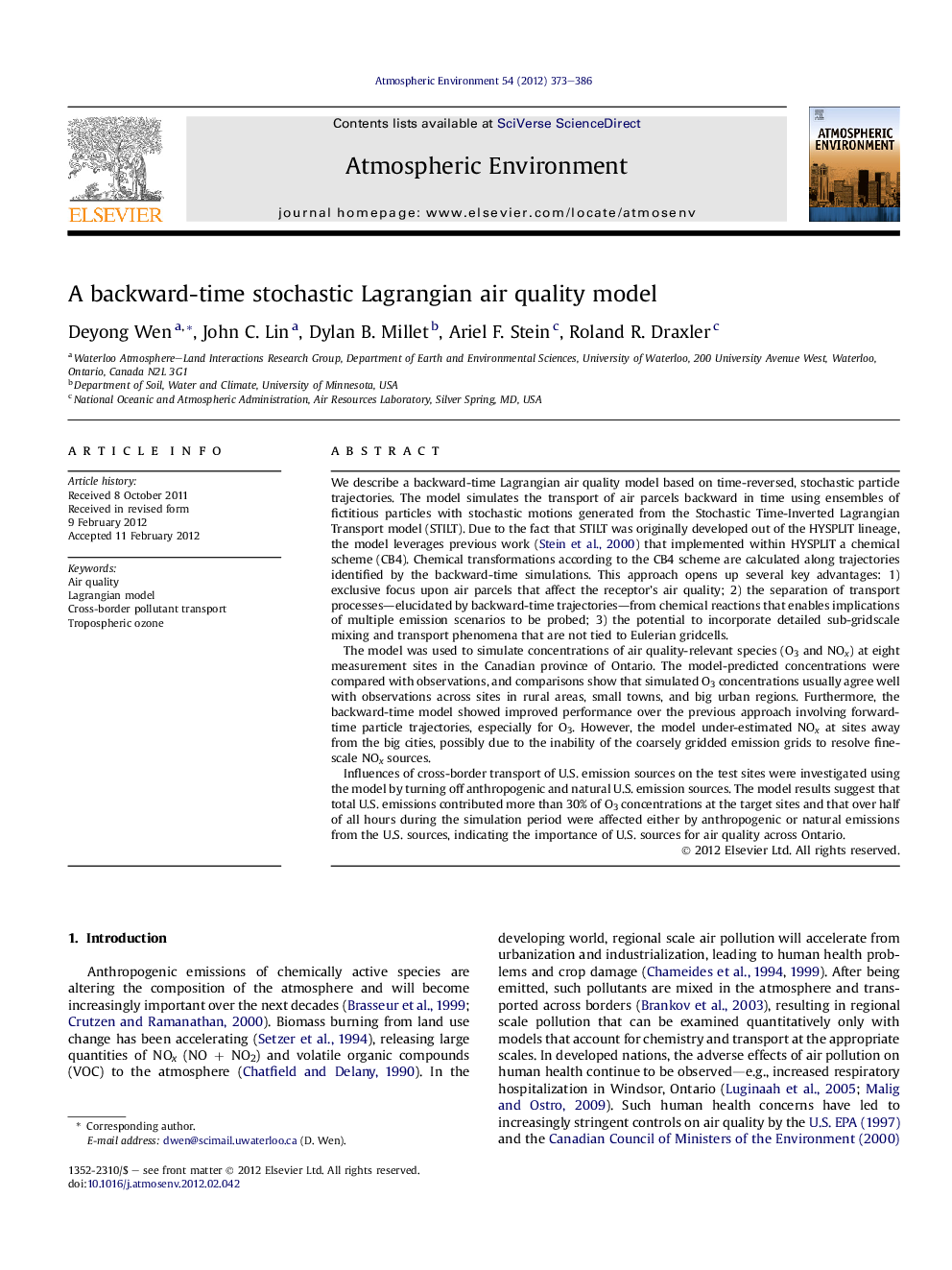| کد مقاله | کد نشریه | سال انتشار | مقاله انگلیسی | نسخه تمام متن |
|---|---|---|---|---|
| 4438808 | 1620417 | 2012 | 14 صفحه PDF | دانلود رایگان |

We describe a backward-time Lagrangian air quality model based on time-reversed, stochastic particle trajectories. The model simulates the transport of air parcels backward in time using ensembles of fictitious particles with stochastic motions generated from the Stochastic Time-Inverted Lagrangian Transport model (STILT). Due to the fact that STILT was originally developed out of the HYSPLIT lineage, the model leverages previous work (Stein et al., 2000) that implemented within HYSPLIT a chemical scheme (CB4). Chemical transformations according to the CB4 scheme are calculated along trajectories identified by the backward-time simulations. This approach opens up several key advantages: 1) exclusive focus upon air parcels that affect the receptor's air quality; 2) the separation of transport processes—elucidated by backward-time trajectories—from chemical reactions that enables implications of multiple emission scenarios to be probed; 3) the potential to incorporate detailed sub-gridscale mixing and transport phenomena that are not tied to Eulerian gridcells.The model was used to simulate concentrations of air quality-relevant species (O3 and NOx) at eight measurement sites in the Canadian province of Ontario. The model-predicted concentrations were compared with observations, and comparisons show that simulated O3 concentrations usually agree well with observations across sites in rural areas, small towns, and big urban regions. Furthermore, the backward-time model showed improved performance over the previous approach involving forward-time particle trajectories, especially for O3. However, the model under-estimated NOx at sites away from the big cities, possibly due to the inability of the coarsely gridded emission grids to resolve fine-scale NOx sources.Influences of cross-border transport of U.S. emission sources on the test sites were investigated using the model by turning off anthropogenic and natural U.S. emission sources. The model results suggest that total U.S. emissions contributed more than 30% of O3 concentrations at the target sites and that over half of all hours during the simulation period were affected either by anthropogenic or natural emissions from the U.S. sources, indicating the importance of U.S. sources for air quality across Ontario.
► A backward-time stochastic Lagrangian air quality model was developed.
► The new model can simulate a variety of gaseous species that affect air quality.
► The model demonstrated a satisfactory performance of ozone simulations.
► U.S. emissions have significant influences on ozone levels across Ontario.
Journal: Atmospheric Environment - Volume 54, July 2012, Pages 373–386